Here's the text.
To protect yourself from tornadoes
Last Updated December 8, 2023
Tornados are generated by cumulonimbuses and cumulonimbuses, with spirals in the atmosphere reaching the ground. When a tornado occurs, it can cause serious damage, such as the roof of the house being peeled off or a large tree falling down, but it is difficult to predict when and where it will occur.
If you feel an unusual weather such as a black cloud approaching, or if you get information such as tornado caution information, take action to protect yourself by referring to the following.
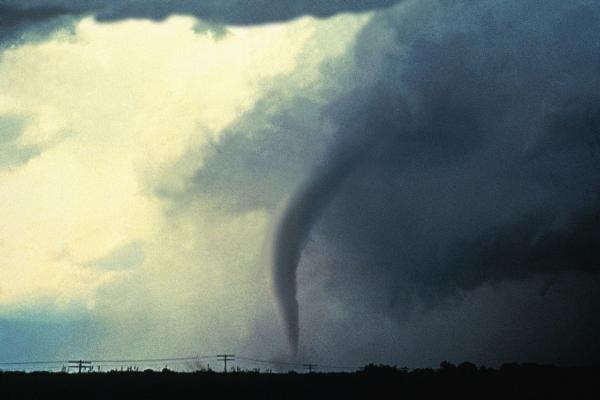
A sign of a tornado
When the following phenomena occur, a developed cumulonimbus that generates a tornado may be approaching.
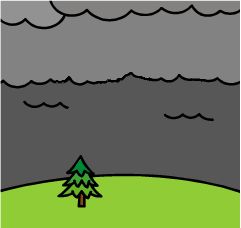
・Black clouds approach and the surrounding area suddenly darkens.
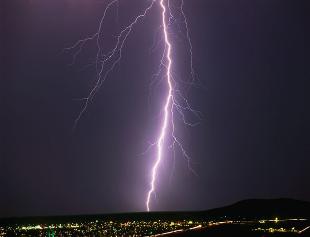
・You can hear thunder and you can see thunder.
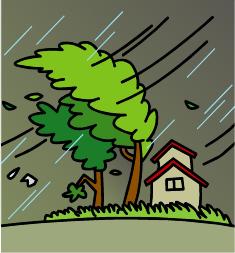
・The cold wind blows out.
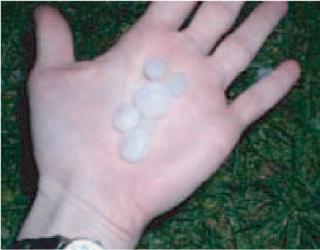
・A large amount of rain and a "hyo" begin to fall.
From the Japan Meteorological Agency website
Weather information on severe gusts such as tornadoes
The following information will be announced by the Japan Meteorological Agency when severe gusts such as tornadoes may occur.
- Preliminary weather information (half to one day before the occurrence of the tornado)
If a weather phenomenon that leads to a disaster is expected due to the development of low pressure, etc., call attention by clearly stating "strong gusts such as tornadoes". - Lightning warning (a few hours before the occurrence of a tornado)
If damage is expected due to severe phenomena (lightning, hail, sudden heavy rain, gusts, etc.) associated with cumulonimbuses, a lightning warning will be issued. At this time, if severe gusts such as tornadoes are expected to occur, we will call attention to the additional items in the warning text. - Tornado caution information (0 to 1 hour before the occurrence of the tornado)
Tornado caution information will be announced when it is determined that the weather conditions are likely to cause severe gusts such as tornadoes. This information informs you that the weather is very likely to cause tornadoes.
○○Prefectural Tornado Warning Information No. 1
Heisei x June 21, 15:26 △△ Local Meteorological Observatory announcement
○○In the prefecture, there is a risk of a tornado.
Tornadoes occur with cumulonimbus clouds. If there are signs of a cumulonimbus approaching, such as a sudden change in lightning or wind, move to a sturdy building to ensure safety.
This information is valid until 16:30 on the 21st.
Example of tornado caution information
- Tornado Accuracy Nowcast (always including regulars)
Areas with severe gusts such as tornadoes are represented by a distribution map (10km lattice), the movement up to one hour later is predicted, and the latest information is provided every 10 minutes, including normal times.
Link Japan Meteorological Agency Nowcast (outside site)
Actions to be taken when announcing tornado caution information
When tornado caution information is released, first pay attention to the state of the sky, and if you detect signs of a cumulonimbus approaching, take the following actions as much as possible.
When I'm outdoors ...
- Evacuate to a nearby sturdy building.
- Without such a building, keep yourself small and protect your head in the shade that can protect yourself from scattered objects.
- Keep away from telephone poles and thick trees, as they may collapse.
- Do not evacuate to storerooms, garages, or prefabs (temporary buildings).
When I'm indoors ...
- Close the shutters, windows and curtains and move away from the window.
- In a house with two stories or more, move to a room without windows on the first floor.
- Move to a room without windows as close as possible to the center of the house.
- Protect your head by keeping yourself small, such as under a sturdy desk or table.
Other
- Check "Tornado Announcement Accuracy Nowcast".
- Collect and confirm information on TV and radio.

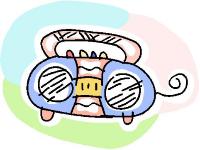
Column Fujita (F) Scale
The Fujita (F) scale may be used as an expression of the strength of intense gusts such as tornadoes. This is a measure for estimating wind speeds such as tornadoes and downbursts (invented by Dr. Tetsuya Fujita of the University of Chicago). It represents six levels of strength from the strongest F5 to F0.
To date, no tornadoes with F4 or higher have been observed in Japan.
| F scale | Wind speed | Situation |
|---|---|---|
| F0 | 17~32m/s (Average of about 15 seconds) | A weak structure such as a TV antenna falls down. The twigs may break, and the trees with shallow roots may tilt. A non-residential house may be broken. |
| F1 | 33~49m/s (Average of about 10 seconds) | Roof tiles fly and glass windows break. The damage to the greenhouse was enormous. Trees with weak roots fall down, and strong trees break their trunks. When a running car receives a crosswind, it is blown off the road. |
| F2 | 50~69m/s (Average of about 7 seconds) | The roof of the house is peeled off, and weak non-residential houses collapse. A large tree falls down or is twisted. A car may be blown away from the road, and the train may derail. |
| F3 | 70~92m/s (Average of about 5 seconds) | The wall is pushed down and the house collapses. Non-residential houses are scattered apart and crushed even when making steel frames. The train is overturned, and the car is lifted and blown away. Even large trees in the forest can break, fall, or be pulled out. |
| F4 | 93~116m/s (Average of about 4 seconds) | Houses are scattered around and scattered around, and weak non-residential houses are blown away without a trace. It's also made of steel frames. Trains are blown away and cars fly in the air for dozens of meters. More than 1 ton of objects are falling, and there is no danger. |
| F5 | 117~142m/s (Average of about 3 seconds) | The house is blown away without a trace, and the skin of Tachiki is peeled off. Cars, trains, etc. are raised and flying, and fly to ridiculous places. A few tons of objects fall out of nowhere. |
(From the Japan Meteorological Agency website)
Link
You may need a separate PDF reader to open a PDF file.
If you do not have it, you can download it free of charge from Adobe.
![]() To download Adobe Acrobat Reader DC
To download Adobe Acrobat Reader DC
Inquiries to this page
Disaster Prevention Planning Division, Crisis Management Department, General Affairs Bureau
Telephone: 045-671-4096
Telephone: 045-671-4096
Fax: 045-641-1677
Email address: so-bousaikikaku@city.yokohama.lg.jp
Page ID: 794-221-514







